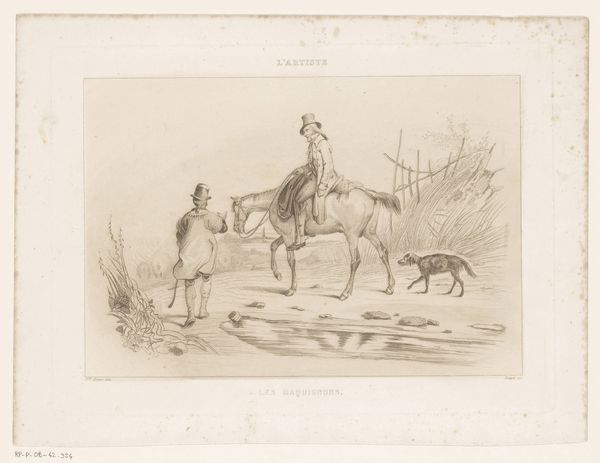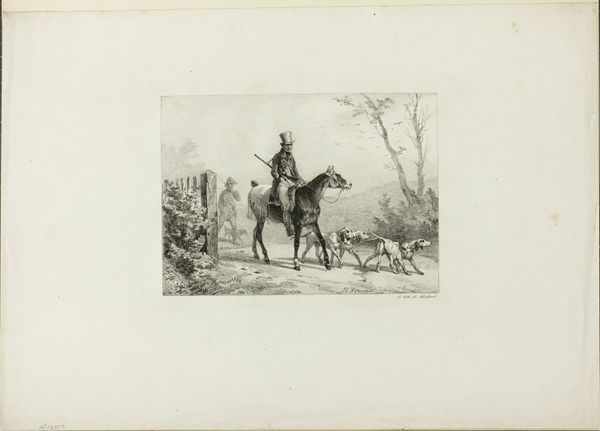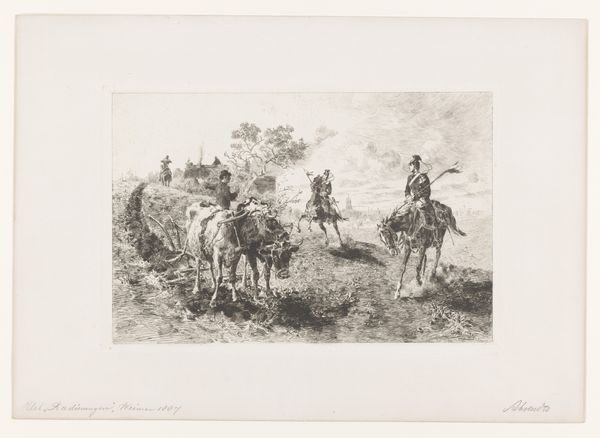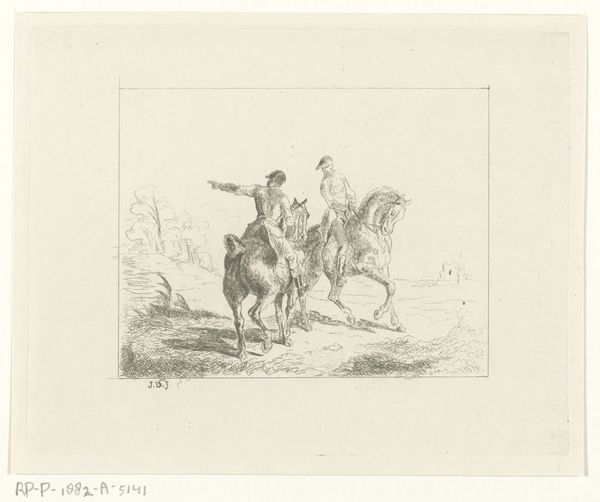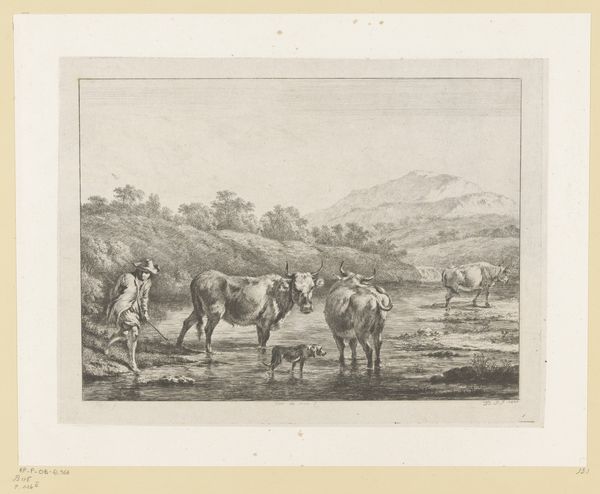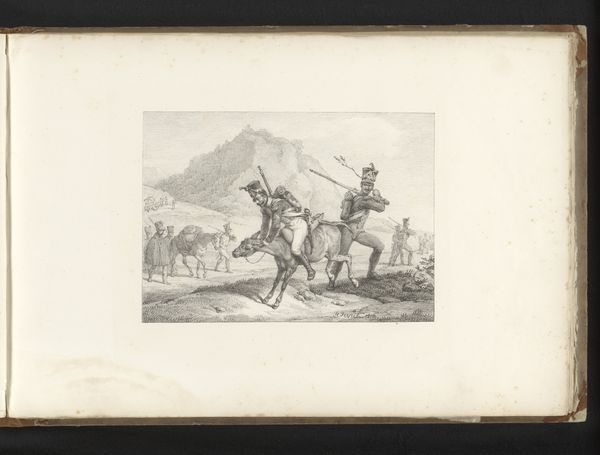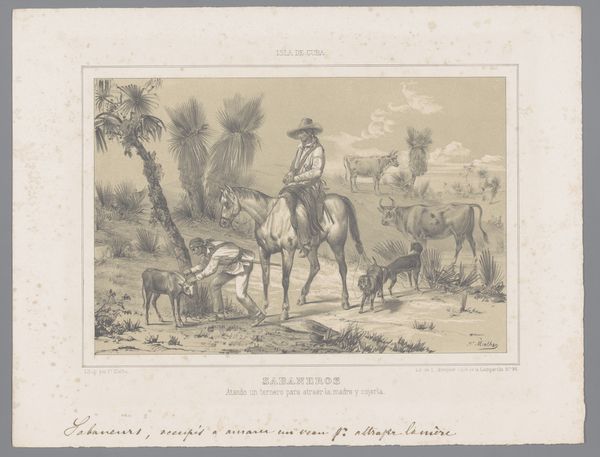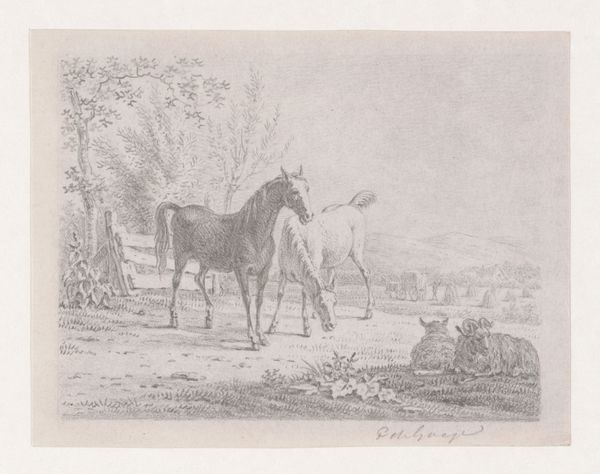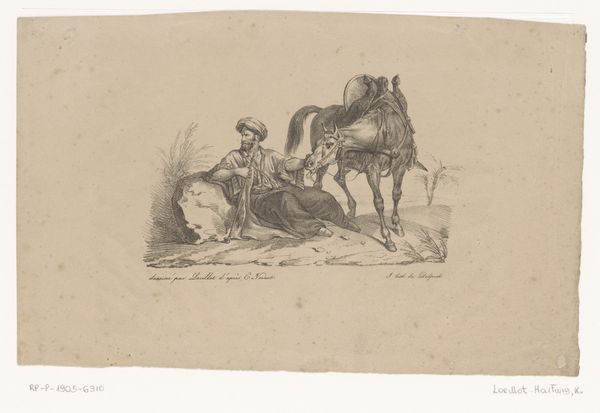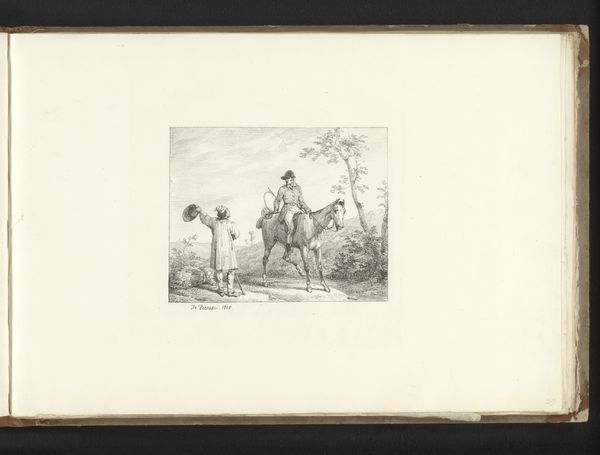
drawing, lithograph, print, paper
#
drawing
#
lithograph
# print
#
landscape
#
paper
#
genre-painting
Dimensions: 149 × 207 mm (image); 310 × 457 mm (sheet)
Copyright: Public Domain
Editor: This is Horace Vernet’s “The Quarry,” a lithograph print on paper. It depicts a hunting scene with a man, horse, and dogs, and possesses a very serene, almost romantic, sensibility. What stands out to you in this piece? Curator: I’m immediately struck by how this work speaks to the commodification of nature. Consider the materiality – a lithograph, a readily reproducible image. It transforms a hunting scene into a product, circulating ideas about land ownership and the dominance of man over nature. The means of production democratize the image, making it accessible for consumption, yet reinforcing a specific social structure tied to leisure and hunting. What implications might this have? Editor: That’s interesting. I hadn’t thought about it that way. So, you're saying that even the medium itself comments on the message, not just the hunting scene depicted? Curator: Exactly! And consider the labor involved: the hunter's skill, the printer’s craft, and the consumer’s act of purchase. The image becomes a commodity, part of a larger economic exchange. We have to also ask about its display and usage – was it for personal enjoyment, for propaganda? What impact did its reproducibility have on wider societal attitudes toward hunting and nature? Editor: That shifts my perspective quite a bit. I was initially focused on the aesthetic qualities, but now I see the network of production and consumption that it represents. It makes me wonder about Vernet’s motivations. Curator: Indeed. The art isn't autonomous. Vernet had a hand in perpetuating these ideals. Examining those mechanics highlights the inherent relationship between labor and how this artwork participated in an active process of social transformation during this period. Editor: Thank you; I hadn't fully considered those layers of interpretation before. It encourages a much deeper consideration beyond the surface aesthetic. Curator: Absolutely. Analyzing art from a materialist perspective reveals the power dynamics at play in its creation, circulation, and consumption.
Comments
No comments
Be the first to comment and join the conversation on the ultimate creative platform.
